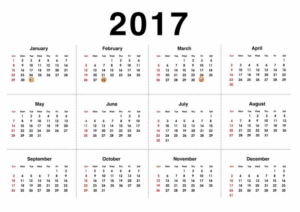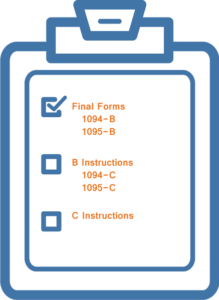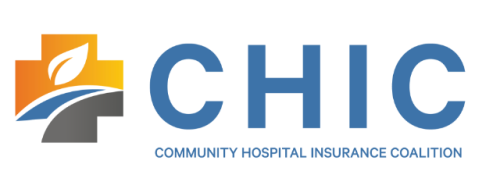Contents
Get Ready for ACA Reporting Deadlines
Sections 6055 and 6056 Reporting – Final Forms
Marketplaces to Offer “Simple Choice Plans” for 2017
Did you know? ACA amended FLSA requirements for nursing mothers
Get Ready for ACA Reporting Deadlines
Last year, employers had extra time to complete their Section 6055 and 6056 reporting, thanks to transition relief from the IRS. This year, it’s unlikely that the IRS will provide any relief from the normal deadlines.
This means that employers will need to act quickly in order to distribute the required forms to employees in January 2017 and then file returns with the IRS on time. 
The 2016 reporting deadlines for specific forms are as follows:
- Jan. 31, 2017—Forms 1095-B and 1095-C due to employees (to be postmarked, if mailed, or sent by email if applicable conditions are met)
- Feb. 28, 2017—Forms 1094-B, 1095-B, 1094-C and 1095-C due to the IRS if filing on paper
- March 31, 2017—Forms 1094-B, 1095-B, 1094-C and 1095-C due to the IRS if filing electronically
Any employer filing 250 or more information returns during the calendar year must file these returns electronically, unless the employer obtains a waiver. For employers filing fewer than 250 returns, electronic filing is voluntary.
Employers that need extra time to file returns with the IRS can request an extension by completing IRS Form 8809 before the filing deadline. Additional extensions may be available if certain hardship conditions apply.
Employers can also request an extension of time to furnish employee statements by sending a letter to the IRS. More information about extensions is available in the instructions for each form.
Filing or furnishing late or incomplete returns can subject you to IRS penalties. In some cases, the IRS may not impose penalties if the failure was due to reasonable cause. However, the more generous transition relief for employers making a good faith effort to comply does not apply to 2016 reporting.
Being prepared and organized can help you meet earlier deadlines for 2016 ACA reporting and avoid potential penalties or other problems.
Sections 6055 and 6056 Reporting – Final Forms
The IRS has released final Forms 1094-B and 1095-B (B Forms) and 1094-C and 1095-C (C Forms), as well as final related instructions for the 2016 tax year.
Forms 1094-B and 1095-B are used by employers reporting under Section 6055 that are not applicable large employers (“ALEs”). The final instructions for completing the B Forms incorporate all of the changes contained in the draft forms and instructions released this summer. Key provisions include details on reporting for individuals with coverage under more than one Minimum Essential Coverage (“MEC”) plan (e.g., a major medical plan and an HRA) and references to proposed regulations regarding solicitation of social security numbers.
The C Forms are filed by ALEs to report information necessary for the IRS to administer the employer shared responsibility mandate under the Affordable Care Act. Additions and clarifications in the final instructions include:
- Proposed Regulations. The final instructions add a reference to proposed regulations that include reporting rules applicable to health reimbursement arrangements (HRAs) and new requirements for soliciting social security numbers.
- Full-Time Employee Count. The final instructions correct an apparent omission regarding the full-time employee count reported on Part III of Form 1094-C. The final instructions clarify that either the monthly or look-back measurement method – and no other methods or full-time employee definitions – may be used.
- COBRA Reporting. Clarifying language has been added on how to report offers of COBRA coverage. Offers of COBRA coverage to former employees (and their family members) should not be entered as offers of coverage on Line 14. However, an offer of COBRA coverage to an employee who remains employed should be entered as an offer of coverage.
- Enrollment by Non-Full-Time Employees. As with 2015 Form 1095-C reporting, ALEs will use Code 1G to report enrollment of individuals other than full-time employees in a self-insured health plan. A note has been added to the final instructions to emphasize that Code 1G applies for the entire year or not at all.
- Non-MEC Enrollment. The Form 1095-C final instructions include a reminder not to use Code 2C, the enrollment code, if the employee’s coverage is not MEC.
- Affordability Safe Harbors. The final instructions caution that ALEs should not enter an affordability safe harbor code on line 16 of Form 1095-C for any month in which they offer MEC to less than 95% of full-time employees (as reported on Form 1094-C).
Changes to Forms 1094-C and 1095 C are minimal from the 2015 Forms. With that said, changes to the Form 1094-C include:
- Line 22 is “Reserved,” as it pertained to the “Qualifying Offer Method Transition Relief,” which is not applicable to 2016 coverage.
- Part III, column (b) includes a new distinction, “Section 4980H” before “Full-Time Employee Count for ALE Member.” This is intended to remind filers that only the section 4980H definition of “full-time employee” should be used in this column (no other definition can be used).
Changes to the Form 1095-C include:
- New language below the form title states “Do not attach to your tax return. Keep for your records.”
- Line 15 has a revised header, “Employee Required Contribution (see instructions).”
- Lines 14 and 16 have certain codes “Reserved,” as they no longer apply to 2016 coverage, and new codes (1J and 1K) have been added to Line 14.
For calendar year 2016, forms are required to be filed with the IRS by Feb. 28, 2017 (or March 31, 2017, if filing electronically). Individual statements for the 2016 calendar year must be furnished by Jan. 31, 2017.
Below is a link to the Final forms and instructions.
1094-B
1095-B
B Instructions
1094-C
1095-C
C Instructions
Please do not hesitate to contact any member of the HealthSure Account Management Team with any questions.
Marketplaces to Offer “Simple Choice Plans” for 2017
In an effort to make choosing a health plan easier for consumers, the federal government is encouraging insurers to offer “simple choice health plans” as an option during the upcoming  Marketplace open enrollment.
Marketplace open enrollment.
Insurers won’t be required to offer simple choice plans on the Marketplace; however, for insurers that choose to do so, the government is providing guidelines for creating a simple choice plan design at each of the current metal levels (bronze, silver and gold).
These plans will have standardized deductibles and annual out-of-pocket maximums. Additionally, many services will allow consumers to pay flat-dollar copayments upfront instead of having to meet their deductible before insurance will cover the cost.
A potential advantage of standardizing consumer choices is allowing consumers to make better, more informed choices. However, experts warn that offering both standardized and non-standardized plans could be confusing for consumers if the plans are not clearly distinguished from one another.
The Affordable Care Act (ACA) amended the Fair Labor Standards Act (FLSA) to require employers to provide the following to nursing mothers for one year after the birth of their child:
| |||
In addition to this federal requirement, many states have their own breast-feeding laws.
To view more information on this law and answers to frequently asked questions, or to learn about your state’s specific regulations, visit www.dol.gov/whd/nursingmothers/.



